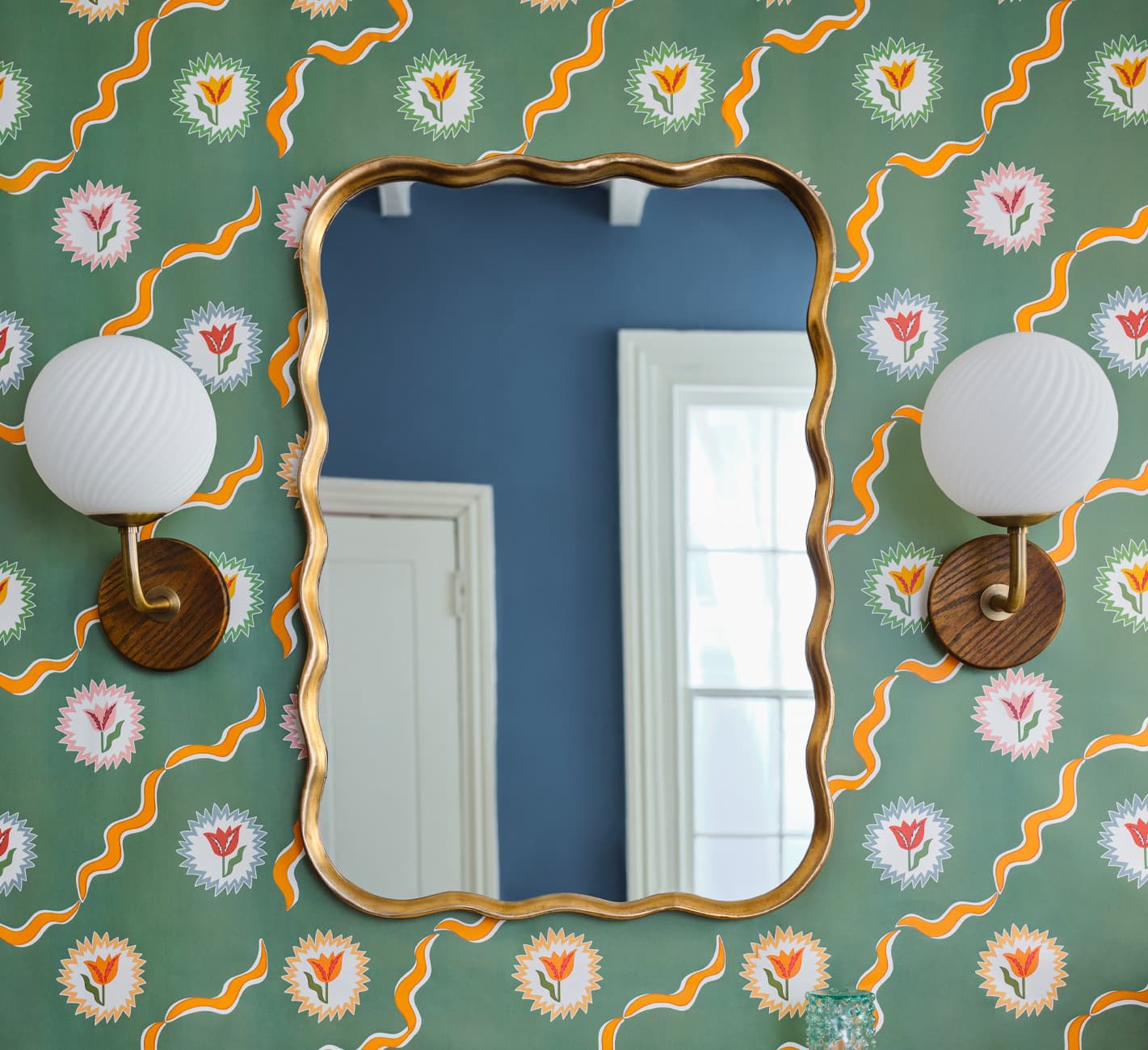Whether you want to set a soothing mood with a muted backdrop or create a bold, eye-catching accent wall, one decorating rule always holds true: The right wallpaper can transform a space.
In recent years, wallpaper has reemerged as top trend in across the style spectrum, so it's no surprise that we've expanded our collection to include everything from floral and fauna favorites to vibrant and subdued geometrics to lovely landscapes (and so much more). But picking out the right wallpaper isn't quite as simple as finding a pattern that speaks to you; choosing adhesives, materials, and square footage can make the task seem daunting.
But fear not, we're here to help! We've put together this guide to help you consider all of the above. Wherever your taste may lie, or whatever space you live in, there's an option for you.
Choosing the Right Adhesive
Unpasted:
A traditional wallpaper format that's long-lasting and a timeless choice for any interior.
- Adhesive or paste required
- Typically arrives untrimmed for precise alignment
- Commonly found with grasscloth and specialty wallpapers
- Professional installation recommended
Prepasted SureStrip:
With water-activated backing, prepasted wallpaper allows for paste-free application and easy removal.
- Prepasted backing is water activated (like a postage stamp)
- Simply mist or dip in water before applying
- Eliminates messy installation
- Removes with ease in full strips
Removable Peel & Stick:
A DIY-friendly option that’s great for apartment living, Peel & Stick applies to your walls like a giant sticker.
- Self-adhesive backing presses on with ease
- No water or paste required
- Leaves no residue
- Easy to remove, replace, and reposition while installing
Choosing the Right Materials
Grasscloth & Naturals:
Handwoven from natural fibers and grasses, like jute, sisal, arrowroot, and raffia, grasscloth wallpapers offer a highly textured look in a palette of earthy tones. Due to its materials, variation in appearance is inherent and a welcome attribute for creating a space with an organic, nature-inspired feel.
- An environmentally friendly option for your walls
- Due to its handcrafted nature, expect variation in the appearance of each roll, as well as visible seams
- Upkeep is more intensive; requires spot cleaning
Non-Woven:
Crafted from a blend of natural and synthetic fibers, non-woven wallpapers are both easy to install and remove – leaving your walls smooth and abrasion free. Lightweight, breathable, and wipeable, they're a great option for kitchens, bathrooms, and other rooms subject to moisture.
- Washable
- Typically vinyl-free and environmentally friendly
Gravure Printed:
Introduced in the 1950s as a revolutionary method of wallpaper printing, gravure-printed wallpapers feature very detailed patterns, deep tonal effects, and stunning color gradations. Its mechanized process is also able to achieve technically advanced effects such as watercolor techniques, transparent colors, and marbleized motifs.
- Fine, exquisite detail
- Texture is embedded into printed type
Digitally Printed:
The most modern form of wallpaper, digitally printed papers offer photographic-quality designs and limitless colors as they're printed from a digitized file. These technological advancements have also cut down production quantity and cost, allowing designers to produce small batch and limited-edition wallpapers for trendy updates to your interior.
- Durable and economical
- Allows for custom, small batch, and limited-edition designs
How Much Wallpaper Do I Need?
Height x Width = Square Feet
- Wallpaper rolls are measured in square feet. To calculate the square footage of your space, we recommend combining the width of each wall, then multiplying this number by your ceiling height. Do not include crown molding or baseboard/skirting in the ceiling height measurement.
- Measure the square feet of openings in your space, such as doors and windows. Subtract from the total square footage.
- Next, divide this number by the square footage of a single roll of wallpaper to determine the number of rolls required.
- Always round up to account for pattern repeat and variation. When in doubt, order a little bit more than you think you need.

